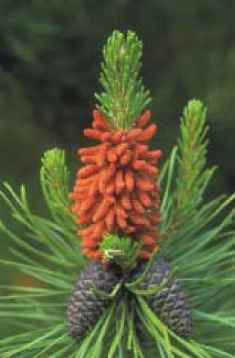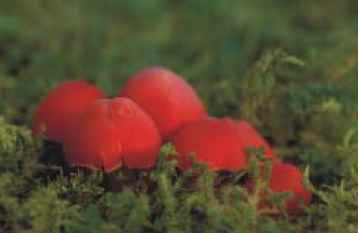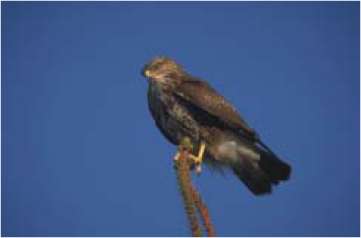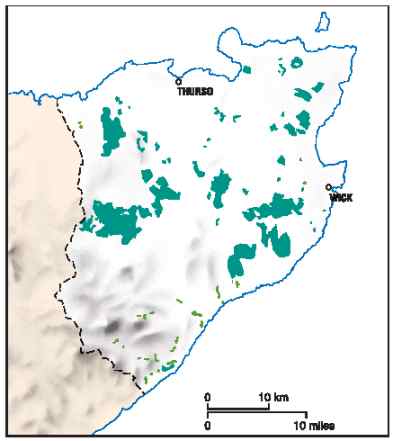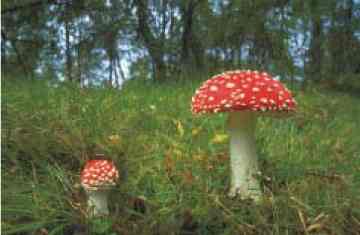|
FOREST AND WOODLANDS Policy woodlands and plantations Habitats and species The majority of woodland blocks in Caithness are coniferous plantations, which are generally small in area and regular in outline, and often planted to give shelter to livestock.
More extensive woodlands have been planted on some of the peatlands such as those around Altnabreac. On poor upland soils, management, species diversity and structure are limited by the site’s exposure to wind. These plantations are usually dominated by lodgepole pine and sitka spruce. However better soils and more sheltered sites allow larch, Douglas fir and western hemlock to be grown and managed according to a range of silvicultural systems. Many long established plantations have existing conservation value, but significant opportunities exist for improving biodiversity through restructuring, planting with broadleaves and in some situations, tree removal and reversion to moorland. Young forestry plantations provide an important habitat for short-eared owl and hen harrier, and forest edges are utilised by merlin. Dunnet Forest provides a prolific and varied woodland fungi habitat, and contains a few nationally uncommon or rare species, listed in Annex 3. The northern latitude, underlying mineral soil, predominantly exotic conifers and presence of much fallen timber are all-important factors in their presence.
Changes in the woodland grant regime in the late 1980s have encouraged the establishment of new native woodlands, which now account for the majority of new woodlands in the Highlands. These woodlands will produce little if any timber, but are expected to develop considerable value for biodiversity, amenity and recreation in the future. Policy woodlands such as those at Achvarasdal, Thrumster, Latheronwheel and Langwell are typically small plantings, often from the 19th Century, associated with large houses and fertile, sheltered sites. Characterised by a wide range of exotic species such as beech and sycamore, they may demonstrate a complex and stable structure, with high proportions of old trees and dead wood, and often have very high recreation and amenity value. Lowland wood pasture and parkland is a national priority habitat associated with a number of important invertebrate and lichen species. Although this habitat is limited in Caithness, areas with old avenues, field boundary trees and long established shelterbelts can provide similar conditions as large open grown trees. Urban and garden woods and trees, whilst of limited size, can provide habitats for a range of woodland creatures.
|
Main issues
Current biodiversity projects Community woodlands at Achvarasdal, Castletown and Dunnet are setting local management priorities and new, well-designed community woodlands have been planted on the outskirts of Wick, Castletown and Reay. The Forestry Commission provides grants for works within non-native woods and forests. The grants are designed to improve the environmental value through work related to Biodiversity Action Plans and designated sites, or the conservation of species listed in the schedules of the Wildlife and Countryside Act or the EU Habitats and Species Directive and the EU Birds Directive. Some farmers have planted amenity woodlands under agri-environment or woodland grant schemes.
|
